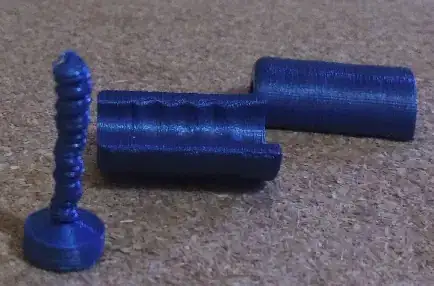3D-printing newbie here. I have a Geeetech's Prusa i3 mk2 B.
I'm trying to print this: https://www.thingiverse.com/thing:1358311
That's a mold, with 2 external parts and a core. The exterior prints wonderful. But the core is too messy. Take a look at this:
What riddles me is that the side parts, and the pole's base, print fine; so this does not look like a bad calibrated printer, but something else entirely. My guess is this is some precise tuning I don't know yet.
I've been trying to print that little pole without success for over a week now. Tried all this:
- Changing the slicer program (I've used Ultimaker Cura and Slic3r prusa edition)
- Tuning the e-steps for avoiding over-extrusion.
- Tuning the z-steps, so the nozzle doesn't melt the last layer when printing a new one.
- In the same sense, changed the nozzle heat.
- Tried lots of different layering, speed, walls, bridging, and quirks configurations.
So far, the best I got is a little pole not-too-deformed so I can make my part anyway, even when the pole is not well printed. But after seeing lots of videos and reading lots of tips online, I still don't understand how to tune my print for that simple little pole.
Other that tips, what I would really like to ask is if somebody has a name for that problem I'm facing, so it would be much more easy to search for my tuning options.
So... any clue how to fix this?
